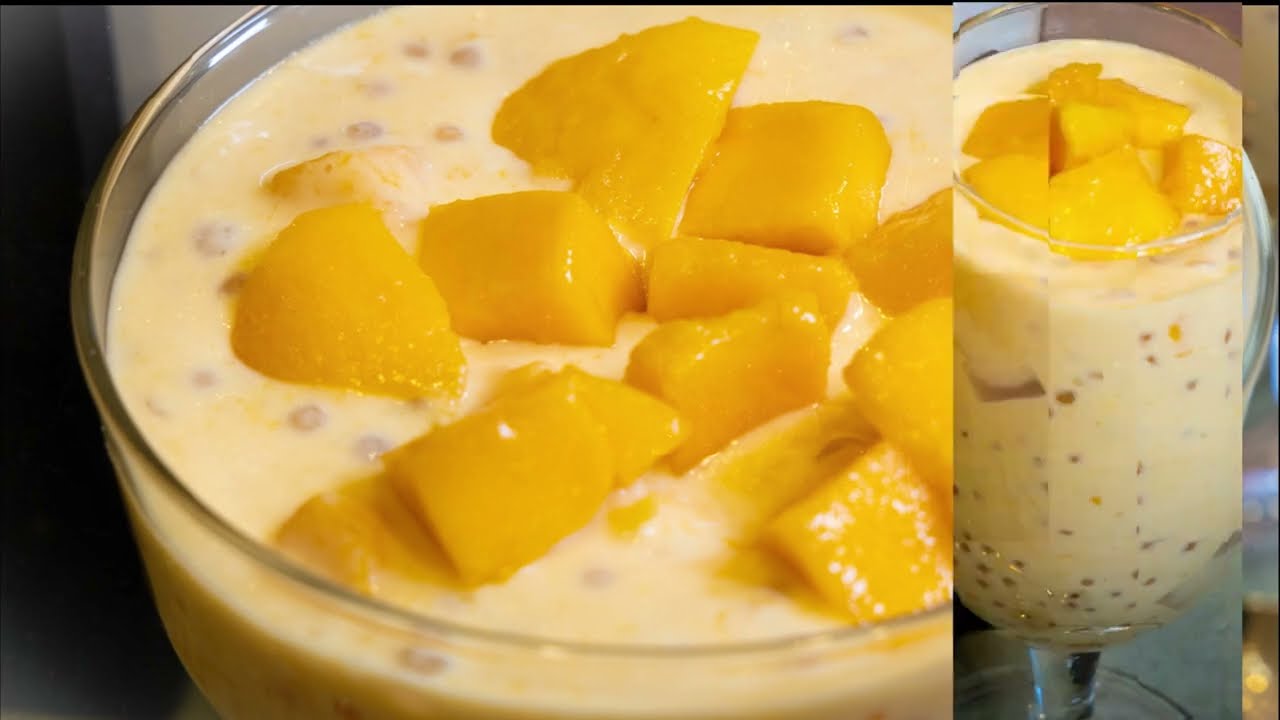Nata de coco recipe is a popular and delicious dessert that originated in the Philippines. This chewy, translucent, and sweet treat is made from coconut water and has become a favorite in many Asian countries. In this comprehensive guide, we will explore everything you need to know about nata de coco recipe, including its history, ingredients, preparation methods, and how to enjoy this delightful dessert.
Contents
- 1 History of Nata de Coco
- 2 Ingredients for Making Nata de Coco
- 3 Preparation Methods for Nata de Coco
- 4 How to Use Nata de Coco Recipe
- 5 Examples of Nata de Coco Recipe
- 6 Comparisons of Nata de Coco Recipe Variations
- 7 Tips and Advice for Making Nata de Coco
- 8 FAQs about Nata de Coco Recipe
- 9 Conclusion
- 10 Unveiling the Delightful Nata de Coco Recipe
- 11 The Art of Making Nata de Coco
History of Nata de Coco

Origins of Nata de Coco
Nata de coco, which means “cream of coconut” in Spanish, is believed to have originated in the Philippines during the Spanish colonial period. It was introduced as a way to preserve coconut water and prevent waste. Over time, the production of nata de coco spread to other Asian countries such as Japan, Thailand, and Indonesia, where it gained popularity as a dessert ingredient.
Evolution of Nata de Coco Recipe
The traditional method of making nata de coco involved fermenting coconut water with acetic acid bacteria and then soaking it in syrup to create the chewy texture. However, modern recipes may use different fermentation agents or flavorings to enhance the taste and appearance of the dessert. Despite these variations, the basic process of producing nata de coco remains the same.
Cultural Significance of Nata de Coco
Nata de coco is not only a delicious dessert but also holds cultural significance in many Asian countries. It is often served during special occasions such as celebrations, festivals, and weddings. The dessert’s chewy texture and refreshing taste make it a popular choice for both young and old alike.
Ingredients for Making Nata de Coco
Coconut Water
The main ingredient in nata de coco recipe is fresh coconut water, which is rich in nutrients and has a subtle sweetness. It is essential to use high-quality coconut water to ensure the best results when making nata de coco.
Sugar
Sugar is added to the coconut water to help feed the fermentation process and create a sweet syrup that coats the nata de coco cubes. The amount of sugar used can be adjusted according to personal preference.
Acetic Acid Bacteria
Acetic acid bacteria are responsible for fermenting the coconut water and turning it into nata de coco. These beneficial bacteria help break down the sugars in the coconut water and create the chewy texture that is characteristic of nata de coco.
Preparation Methods for Nata de Coco

Fermentation Process
To make nata de coco, start by mixing coconut water with sugar and acetic acid bacteria in a clean container. Cover the mixture with a breathable cloth and let it ferment at room temperature for several days. Stir the mixture regularly to ensure even fermentation.
Cutting and Soaking
Once the coconut water has turned into a jelly-like substance, cut it into small cubes or shapes using a sharp knife. Soak the nata de coco cubes in a sugar syrup solution to enhance the flavor and sweetness. Store the nata de coco in a sealed container in the refrigerator until ready to serve.
Serving Suggestions
Nata de coco can be enjoyed on its own as a refreshing dessert or added to fruit salads, drinks, or ice creams for a tropical twist. Experiment with different flavors and textures to create unique desserts that showcase the versatility of nata de coco.
How to Use Nata de Coco Recipe
Nata de coco recipe can be used in a variety of ways to add flavor and texture to your favorite dishes and drinks. Here are some creative ways to incorporate nata de coco into your culinary creations:
- Fruit Salads: Add nata de coco cubes to fruit salads for a burst of sweetness and chewiness that complements the fresh fruits.
- Beverages: Blend nata de coco into smoothies, shakes, or cocktails for a tropical touch that will delight your taste buds.
- Desserts: Use nata de coco as a topping for ice cream, yogurt, or puddings to add a fun twist to classic desserts.
- Baked Goods: Incorporate nata de coco into cakes, muffins, or cookies for a unique flavor and texture that will surprise and delight your guests.
- Savory Dishes: Experiment with adding nata de coco to savory dishes such as curries, stir-fries, or rice bowls for a sweet and chewy contrast to the savory flavors.
Examples of Nata de Coco Recipe

Nata de Coco Fruit Salad
- Ingredients:
- Assorted fruits (e.g., mangoes, pineapples, strawberries)
- Nata de coco cubes
- Sweetened condensed milk
- Fresh mint leaves
- Instructions:
- Chop the fruits into bite-sized pieces and combine them in a large bowl.
- Add the nata de coco cubes and mix well.
- Drizzle sweetened condensed milk over the fruit salad and garnish with fresh mint leaves.
- Chill the salad in the refrigerator before serving for a refreshing treat.
Nata de Coco Bubble Tea
- Ingredients:
- Cooked tapioca pearls
- Brewed black tea
- Nata de coco cubes
- Milk or creamer
- Honey or simple syrup
- Instructions:
- Prepare the tapioca pearls according to the package instructions and set aside to cool.
- Fill a glass with brewed black tea and add nata de coco cubes.
- Pour in milk or creamer and sweeten with honey or simple syrup to taste.
- Add the cooked tapioca pearls and stir well before serving with a wide straw.
Comparisons of Nata de Coco Recipe Variations
When it comes to making nata de coco, there are several variations and flavor combinations to consider. Here are some comparisons of different nata de coco recipes to help you choose the one that suits your taste preferences:
- Traditional vs. Flavored Nata de Coco
- Traditional nata de coco is made with plain coconut water and sugar, while flavored versions may include extracts such as pandan, vanilla, or strawberry for added taste.
- Homemade vs. Store-Bought Nata de Coco
- Homemade nata de coco allows you to control the ingredients and fermentation process, resulting in a fresher and more authentic flavor compared to store-bought options.
- Chunky vs. Jelly-like Nata de Coco
- Chunky nata de coco contains larger, irregularly shaped cubes, whereas jelly-like nata de coco features smaller, uniform cubes for a more delicate texture.
Tips and Advice for Making Nata de Coco
Tip 1: Use Fresh Coconut Water
For the best-tasting nata de coco, use fresh coconut water that is free from preservatives or additives. This will ensure a clean and natural flavor that highlights the sweetness of the coconut water.
Tip 2: Monitor the Fermentation Process
Check the nata de coco mixture regularly during fermentation to prevent over-fermentation, which can result in a sour taste or off-putting odor. Stirring the mixture helps distribute the bacteria evenly for consistent results.
Tip 3: Experiment with Flavors
Don’t be afraid to experiment with different flavor combinations and additions to customize your nata de coco recipe. Try incorporating fruits, spices, or extracts to create unique variations that reflect your personal taste preferences.
FAQs about Nata de Coco Recipe
How long does it take to make nata de coco?
The fermentation process for nata de coco typically takes around 7-10 days, depending on the ambient temperature and the desired chewiness of the final product.
Can I store nata de coco at room temperature?
It is recommended to store nata de coco in the refrigerator to maintain its freshness and prevent spoilage. Properly sealed containers can extend the shelf life of nata de coco for up to a few weeks.
Is nata de coco gluten-free?
Yes, nata de coco is naturally gluten-free since it is made from coconut water and does not contain any wheat or gluten-containing ingredients.
Can I use artificial sweeteners in nata de coco recipe?
While sugar is traditionally used to sweeten nata de coco, alternative sweeteners such as stevia or erythritol can be substituted for a lower-calorie option. Adjust the amount of sweetener to taste.
How can I tell if nata de coco has gone bad?
Discard nata de coco that has an unusual color, slimy texture, or unpleasant odor, as these are signs of spoilage. Fresh nata de coco should have a translucent appearance and a mild coconut fragrance.
Conclusion
In conclusion, nata de coco recipe offers a delightful and versatile way to enjoy the natural sweetness and chewy texture of coconut water. Whether you prefer traditional flavors or innovative combinations, there are endless possibilities to explore with nata de coco. By following the tips, advice, and examples provided in this guide, you can create delicious nata de coco desserts that will impress your family and friends. Experiment with different ingredients and techniques to make nata de coco your signature dish and savor the tropical flavors of this beloved dessert.
Unveiling the Delightful Nata de Coco Recipe
Nata de coco recipe is a fascinating exploration into the world of delicious and chewy coconut water-based desserts. This article will guide you through the process of making nata de coco, provide examples of creative recipes, offer comparisons of different variations, share tips for perfecting your nata de coco dish, answer frequently asked questions, and conclude with an invitation to savor the tropical flavors of this delightful treat.
The Art of Making Nata de Coco
Introduction to Nata de Coco
Nata de coco is a chewy, translucent dessert that originates from the Philippines. It is made from coconut water, fermented with acetic acid bacteria and yeast, and then cut into small, jelly-like cubes. The result is a sweet and refreshing delicacy that can be enjoyed on its own or incorporated into various dishes.
Ingredients Needed for Nata de Coco Recipe
To make nata de coco at home, you will need the following ingredients:
- Fresh coconut water
- Sugar
- Acetic acid bacteria and yeast culture
- Water
Steps to Prepare Nata de Coco
- Start by sterilizing your equipment and workspace to prevent contamination.
- Mix fresh coconut water, sugar, and the bacterial culture in a clean container.
- Allow the mixture to ferment at a controlled temperature for several days until it forms a gel.
- Cut the gel into small, uniform cubes to create nata de coco.
- Rinse the nata de coco cubes thoroughly to remove any excess sugar or acidity.
- Store the nata de coco in a simple syrup solution to preserve its texture and flavor.
